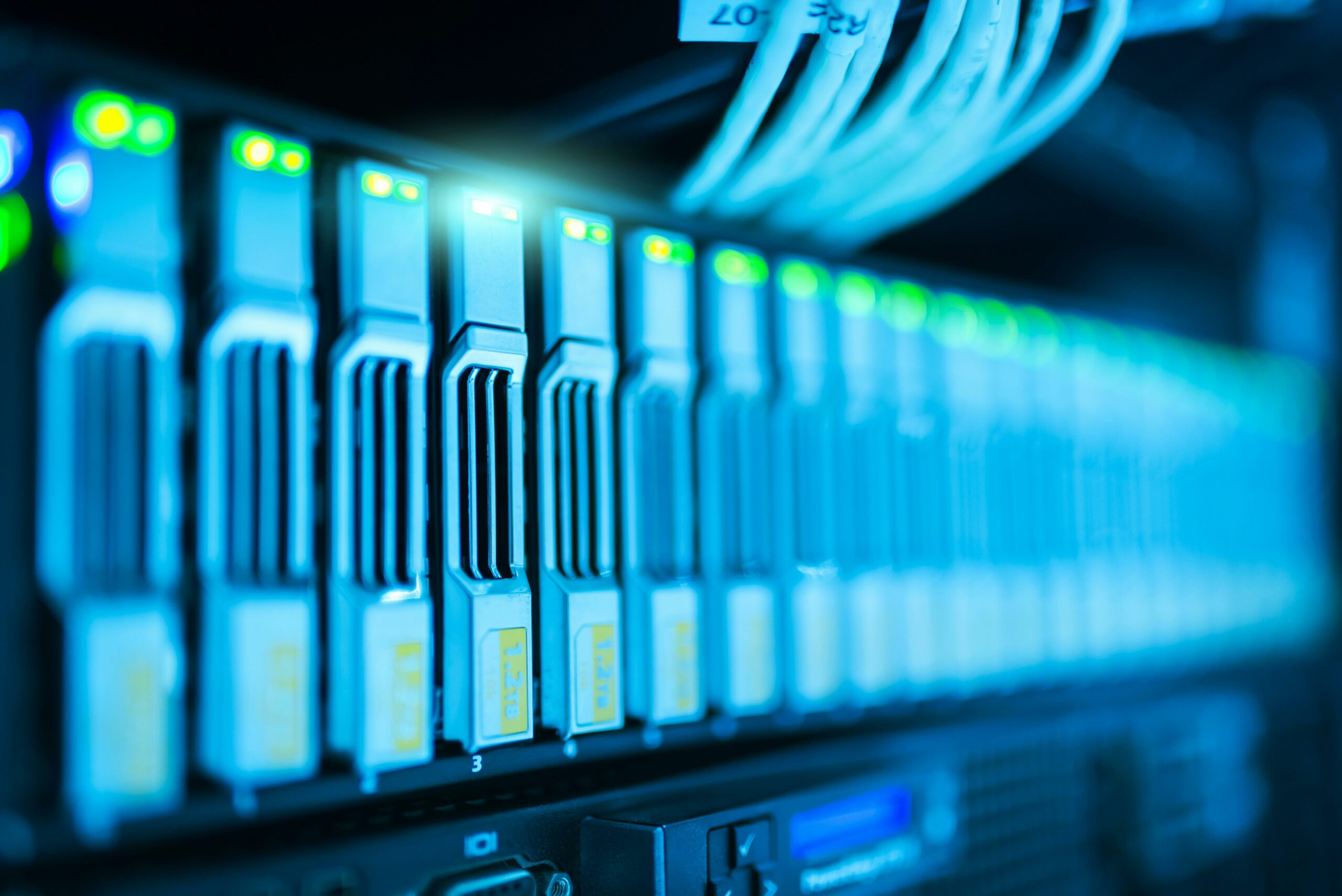In an increasingly connected world heavily reliant on digital technology, IT infrastructures play a vital role in our daily lives. Whether it’s storing data, accessing online services, or facilitating global communication, digital infrastructures have become indispensable to our modern functioning. However, behind this apparent virtuality lies a very tangible reality: the considerable environmental impact these infrastructures generate.
From massive data centers to global communication networks, every aspect of digital infrastructure requires significant amounts of energy and natural resources, while also generating greenhouse gas emissions. Faced with this reality, it is imperative to explore future perspectives and actions to mitigate the environmental impact of digital technologies.
Infrastructure, as analyzed by Fruggr
If we aim to simplify the definition of infrastructure, it encompasses everything that is not visible, thus everything except terminals, enabling communication and data exchange between devices in a computer network. Here, we consider two factors: data centers, centralized giants housing essential IT equipment for storage, processing, and data management, and the network, whose infrastructure relies on three pillars: hardware and software. As the technological backbone of our society, infrastructure plays essential roles in all domains: connecting to servers, managing data, accessing the web, automating processes, and enabling collaboration. This indispensable operation requires significant energy consumption, posing challenges in resource management. At the core of this architecture are data centers, as well as the network, less visible but equally energy-intensive. Their environmental impact is significant and unfortunately often overlooked as they involve “invisible,” intangible elements.

Environmental impacts
Data centers, the cloud, servers—all are central elements in the operational chain of IT. When improperly sized or utilized, these solutions can be highly energy-intensive and thus have a strong environmental impact. When discussing the environmental impact of infrastructures, one immediately thinks of the pillars of the global digital infrastructure: data centers.
These data centers, whose uninterrupted operation is essential for many industries, consume a colossal amount of electricity (nearly 2% of global electricity consumption!). France stands out as the fourth-largest holder of data centers, with around 260 data centers contributing between 4% and 22% to the country’s total energy consumption (study ADEME and ARCEP). To understand this impact, it is essential to prioritize the life cycle analysis of data centers to assess their impact throughout the cycle.
Data center fabrication
The construction of data centers involves massive use of rare metals and increased exploitation of natural resources, with environmental impacts. These metals, crucial for data center equipment, are often extracted under deplorable working conditions and through polluting processes. This process is linked to major environmental issues such as pollution, deforestation, and biodiversity loss.
Operation
A Control Up study revealed that 77% of servers in data centers are over-provisioned, meaning they have more operating hardware than necessary. Consequently, they consume more energy than what tasks require, contributing to increased energy inefficiency. Moreover, some companies own servers but only utilize a portion of them, further exacerbating energy waste. Additionally, data centers operate continuously, requiring constant electrical supply to avoid overheating and maintain efficiency. To ensure optimal operation, it is essential to maintain them at an appropriate temperature with sophisticated cooling systems.
Cooling
Maintaining a temperature of 20°C in data centers is crucial for their operation. However, their air conditioning consumes a significant amount of electricity and water, equivalent to the annual consumption of thousands of people. This water is then discharged, adding pressure on water supply and the environment. Additionally, this process involves the use of polluting chemicals and toxic batteries.
Building
The construction of data centers consumes a significant amount of non-renewable energy and produces waste, exacerbating their carbon footprint. Moreover, their expansion can destroy natural habitats and alter local ecosystems. These environmental impacts extend beyond their direct energy consumption.
What about Networks?
Digital networks, which consume a lot of energy, account for approximately 4% to 13% of emissions in France, according to Arcep. These networks connect users’ terminals to each other and to data centers. They mainly consist of equipment in the “local loop” or the “last mile.” This includes 1.1 billion DSL/fiber boxes, 10 million relay antennas (2G to 5G), and approximately 200 million other active WAN (wide-area network) and LAN (local-area network) equipment worldwide. Between 2010 and 2015, we witnessed the deployment of at least 10 million 4G and 5G relay antennas, adding to the impact of existing network infrastructures, notably DSL/fiber boxes.
It is important to note that networks transmit information over thousands of kilometers, as data centers may be located in another country or even on another continent, thus consuming a lot of energy. CDN operators, offering private networks, enable information to travel faster over long distances, while optimizing and securing the network, but this also exacerbates the network’s footprint.
Future perspectives
Despite the high energy consumption of current digital infrastructure, sustainable alternatives are being sought. Trends include improving energy efficiency, using renewable energies, and designing eco-friendly infrastructures to mitigate the environmental impact of the continuous growth of digital infrastructures.
Evolution of usage technologies
The use of IT equipment evolves over the years to adapt to business needs while increasingly considering environmental challenges. Today, companies have a multitude of choices for storing and managing their data. Two trends stand out as primary solutions:
- Edge Computing, which processes data at the network’s edge, closest to its source, thus reducing bandwidth needs during transits, especially between different systems where data will be processed, analyzed, stored, and backed up.
- The Cloud, a model that provides IT services via the internet, allowing access to resources such as servers, storage, and software on demand, without needing to directly own or manage the underlying infrastructure.
It is important to specify that each solution adapts to how you use your data.
Data center localization
Some companies choose to relocate their data centers to optimize their energy efficiency. A process that must take into account the energy mix of countries, indicating the combination of different energy sources used to meet electricity and energy needs, such as coal, natural gas, nuclear, renewable energies, and others, in a country. For example, Google and Apple have installed centers in Norway and Sweden, taking advantage of cold climates to reduce the need for air conditioning. Microsoft, in its “Natick” project, created an underwater data center, using seawater and a nitrogen atmosphere to maintain a low temperature.
Heat reuse
Some cities reuse the heat from data centers to heat municipal pools and businesses. This is the case in Seine-et-Marne, where the experimentation was successful. Companies like Hestiia are also working on heat reuse projects. For example, this company has succeeded in creating radiators from emitted heat.
Some actions
Acting on infrastructure involves minimizing energy consumption related to data centers, the cloud, servers, or the network. Depending on the existing infrastructure and the organization’s maturity level, various actions can be implemented:
- If your organization has its own server room: reduce the number of physical servers and replace them with virtual servers.
- Migrate data to data centers with low environmental impact. This reduces the overall carbon footprint of the company by minimizing energy consumption and greenhouse gas emissions associated with IT operations. Additionally, it can contribute to enhancing the company’s brand image by demonstrating its commitment to sustainability and environmental protection.
- Rationalize storage bays by grouping data more efficiently, which will reduce the number of servers needed, decrease electricity consumption, and associated operating costs. Moreover, it facilitates data management and access, improving the operational efficiency of the data center.
- Optimize air conditioning to save energy and reduce the carbon footprint.
- Switch electricity contracts to green energy contracts.
- Favor hosting data in countries with a low energy mix.
- Provide solutions to schedule the shutdown of virtual machines at specific times when they are not needed, such as during off-peak hours or weekends.
However, it is essential to understand where we come from to know where we are going. We often repeat this, but the best first approach remains to get audited, or to measure the impact of data centers and the network ourselves. Some solutions, like Fruggr, offer this. Our infrastructure module allows us to map our clients’ infrastructure, materialize the associated footprints, and provide recommendations to optimize resources. And based on these recommendations, it will be possible to act on a large scale for a more responsible digital world.Various actions are possible to promote a more responsible digital world. Small, cumulative, and collective actions have a significant impact.
Data centers and networks are often considered black boxes in terms of energy consumption and environmental impact. They require total transparency to make decisions and implement actions aimed at reducing their footprint. It is essential to clarify this topic to fully understand their operation and identify opportunities to improve their sustainability. With general awareness and the implementation of actions, change is possible!

